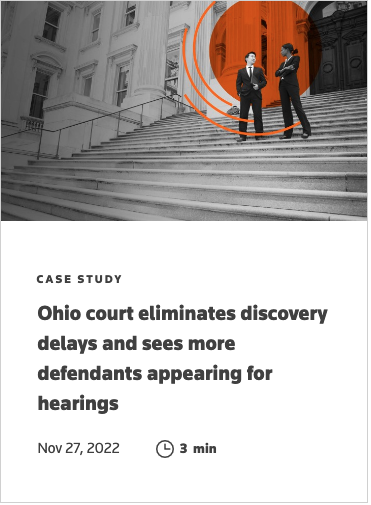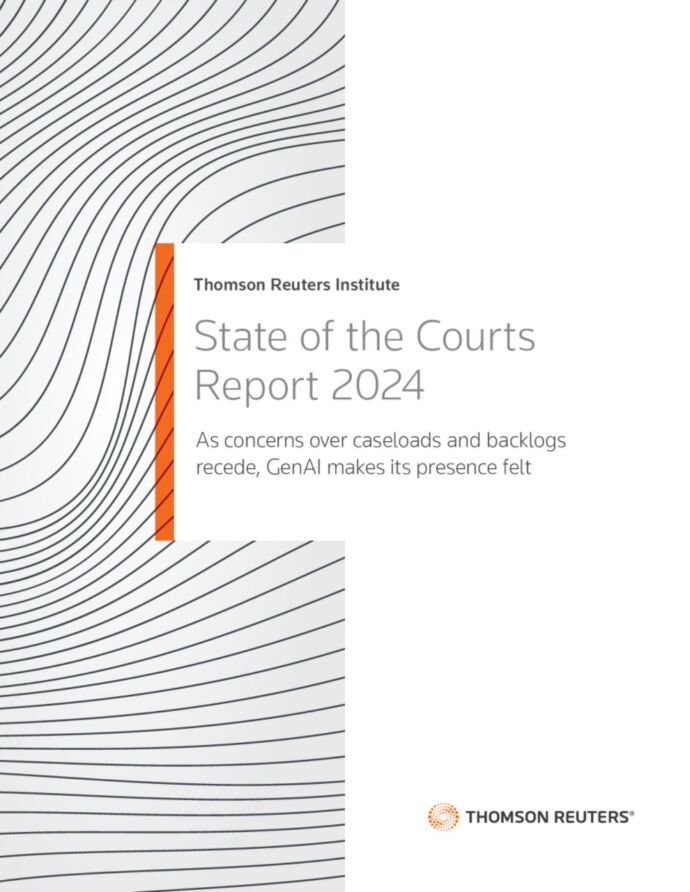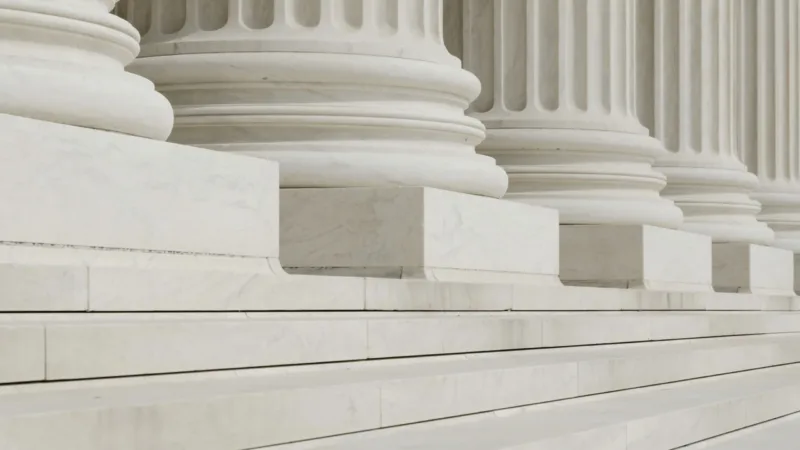In the second annual State of the Courts Report, published by the Thomson Reuters Institute, judges and court professionals from state, county, and municipal courts offered their initial insights about the impact that generative artificial intelligence (GenAI) could have on how they conduct the business of the courts.
This year’s online survey was conducted with 223 state, county, and municipal court judges and court professionals, between November 2 and 17, 2023.
Not surprisingly, our survey respondents in this year’s report showed some uncertainty and reluctance about the use of GenAI in the nation’s courtrooms. Indeed, while 15% said they think generative AI can be used in the court setting, only 9% think it should be used. And much larger portions said the opposite: More than two-thirds (68%) said they are uncertain if GenAI can be used in a courtroom, and 58% said they are unsure if it should be.
As one staff attorney at a state courthouse said of the potential use of GenAI in the courtroom: “The technology is being pushed too fast and hyped too far.”
Also not surprisingly, nearly two-thirds (65%) said their objection had to do with risk concerns about generative AI, with the strongest concerns relating to accuracy and quality of data sources (51%); and how GenAI lacks the human judgment, reasoning, and emotion that is critically inherent to the legal profession (19%).
Indeed, one county court clerk of courts said her concerns were that GenAI use in court proceedings could make “the process less humanizing and dignified for litigants.”
Beyond generative AI, the annual report showed that judges and court professionals at all levels said they are still managing many of the same challenges that they had cited in our previous survey, conducted in 2022. These concerns were strongly reflective of how courts have had to navigate through the post-pandemic environment, and included burdensome hearing delays, growing caseloads, and the glacial pace of modernization within the courts.
Embracing tech: Courts overcome challenges and look ahead
Yet, while these concerns were still reflected in our latest survey, many of these challenges have receded somewhat, making room in many respondents’ minds for a clearer path toward more positive outcomes. For example, while increasing caseloads continue to be the biggest change that respondents said they had experienced in the past two years, with 40% of respondents citing this change, that was down from 45% in our previous survey.
Indeed, all other aspects of work are also less likely to have increased since our previous survey, with increased case delays being cited by 27% of respondents, compared to 45% in 2022; and increased courts backlogs cited by 25%, compared to 44% previously.
And even though more than half of respondents (56%) said they expect to experience staffing shortages in the coming 12 months, that was down from the past 12 months when almost two-thirds (64%) reported staffing shortages.
Further, it seems that courts and their workers are enjoying broader engagement with technology solutions, especially around such critical areas as evidence collection and digital storage, and certain case-material sharing and management tools are seeing more acceptance across the board.
In fact, more than one-third (35%) of respondents say they now use digital evidence management systems — up from 27% in the last survey. More interestingly, nearly three-fifths (58%) of those who say they are not using a digital evidence management system think that having one would be at least somewhat beneficial for their operations.
 | Case studyOhio court eliminates discovery delays and sees more defendants appearing for hearings
|
It’s as if both the easing of the pandemic-induced stasis in the courts and the slow, albeit steady movement toward new technology solutions to improve court operations have melded with the great expectations of GenAI to make today’s judges and court professionals more conscious of their opportunities amid the frenetic pace of work. Indeed, they may even be daring enough to envision a future in which worries about overwork, delays, and staffing shortages are finally moved to the backburner.
All this has coalesced to give our survey respondents something akin to breathing room, or at least, a chance to take steps to better manage the challenges they continue to face — more often now, through the use of new technology solutions.
As judges and court professionals look to 2024 and beyond, they seem to be doing so without one eye steadily held in the pandemic-era rearview mirror, and instead are looking forward, moving to take advantage of whatever benefits and efficiencies today’s new technologies can offer.
Many of the challenges cited in the previous survey have receded somewhat in this year’s report, making room in many respondents’ minds for a clearer path toward more positive outcomes, especially around the use of technology to solve workplace issues.
 | ReportState of the Courts Report 2024
|









